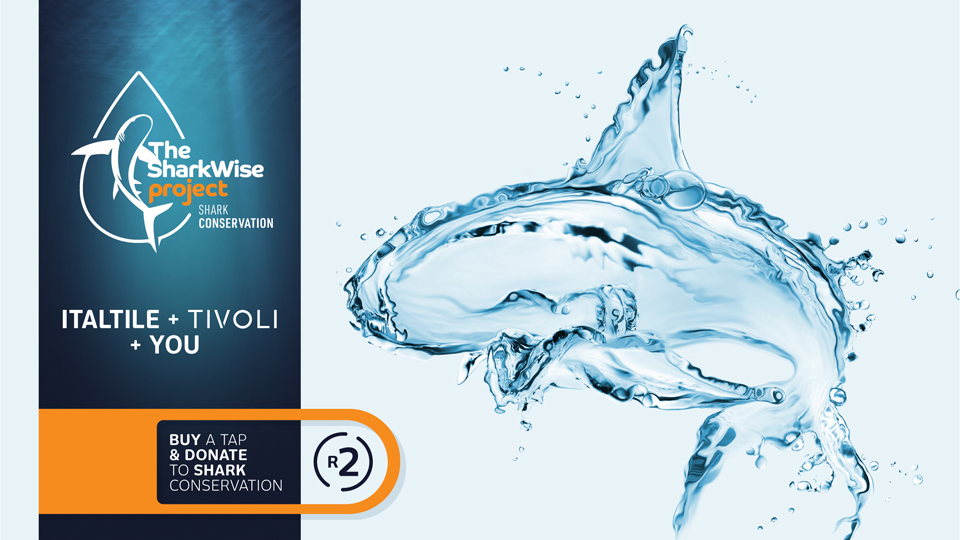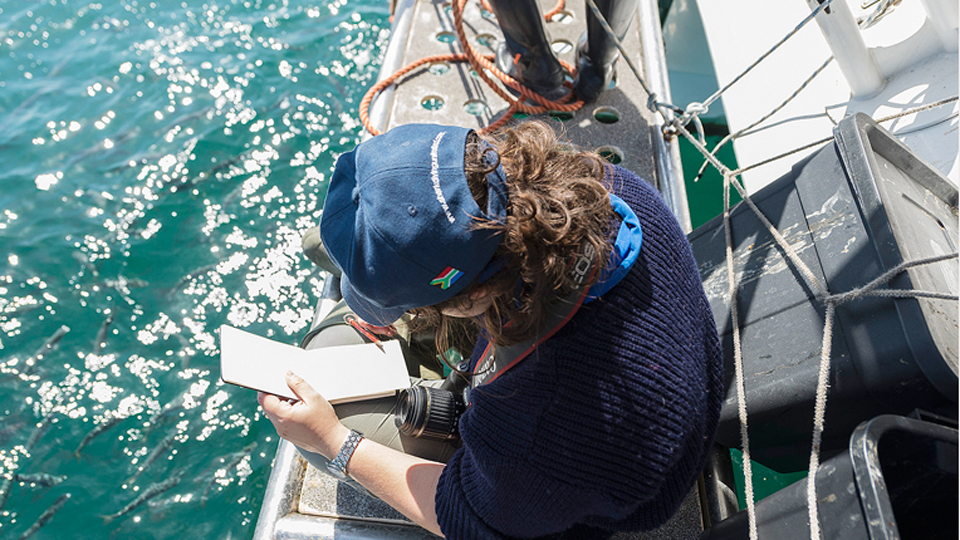By now, you’ll have read a bit about Italtile’s collaboration with ITD (the suppliers of Tivoli taps) and marine biologist Dr Sara Andreotti. It’s a collab that revolves around you, too! As an Italstylista, you play your part in shark conservation every time you purchase a Tivoli tap. How’s that? Well, we donate R2 of the purchase price to Dr Andreotti’s shark research. Being part of a passionate team like this has further rewards, one being the regular sharing of Shark Notes: insights and wisdom from the desk of Dr Andreotti... when she’s not miles out at sea keeping watch over her beloved Great Whites. November’s Shark Notes reveal the magic of White Shark skin camouflage and makeup.

White Shark Camouflage and Magic Skin: from double colour to dermal denticles.
Did you know that white sharks are not entirely white? The origin of the name white sharks, or white pointer, in Australia, comes from the colour of their belly, in contrast with the darker grey-blue colour of their backs. The reason behind the double-coloration is suspected to be an ingenious camouflage strategy: with the darker sea-floor when looking at a shark from above, and with the sea-surface, which is bright white when illuminated by the sun, when looking up at the shark from underneath.
During a baited dive for the SharkSafe Barrier experiment in Gansbaai, I had the privilege of being in the water with a white shark in low light conditions. We were diving in Gansbaai Shark Alley, inside a 13x13 meters square of SharkSafe Barrier vertical pipes, built to test the efficacy of this technology to exclude sharks from an area. It was a winter afternoon, around 3pm or 4pm, and we were still busy working at the “SSB square”. The sunlight was already penetrating the water at a very low angle, reducing the colour and contrast perception for our eyes. We called it a “flat light” situation.
We already saw at least one white shark around, after we baited the water to collect data on their behaviour around the barrier. Once the data collection was completed, we lowered ourselves to the bottom, at about 7m depth, in the middle of the SSB protected square, to check on the SSB pipes. Surprisingly, once at the bottom, I couldn’t see the sharks swimming outside the SSB square. I moved to the edge, keeping myself between the SSB pipes, to see if I could finally see them, since the water visibility was over 12 meters. And then, one appeared, at less than 3 meters from me!

The low light made the darker back and lighter belly of the shark merge in one uniform greyish colour that resembled perfectly the colour of the water around it. It almost felt like a magic trick. Of course, as soon as the shark saw the pipes of the barrier, it made a slow 90 degree turn and carried on. It was an eye opener for me, to realise how skin colour makes this large 3 meter-plus shark absolutely invisible, when in the right conditions.
What also makes shark’s skin interesting is the lack of flat scales, like those on bony fishes. Sharks have small teeth-like scales called dermal denticles, that are only properly visible under a microscope. And, just like teeth, these scales have a core made of dentine, covered in enamel, and contain nerve endings. These denticles are also pointed and aligned in rows directed from the nose to the tail of the sharks, which reduces friction between the shark’s body and the water, helping them to conserve energy by reducing the drag of the water.
These denticles are so efficient that their design was copied to reduce the drag on aircraft. They were also mimicked to develop Olympic swimwear and even remastered to stop bacteria from sticking to surfaces.
The structure and direction of the denticles is also the reason why a shark’s skin feels rough when stroked towards the head, but smooth when stroked towards the tail. In fact, it is so rough that sharkskin was once used as sandpaper. The sandpaper/ sharkskin association is so strong, that it has actually been incorporated into the Italian language: in Italy, there is a species of shark called “smeriglio”, and the verb used to describe the use of sandpaper on a object is called “smerigliare”!
Last fascinating ‘shark byte’ for today: female sharks have a really thick skin, adapted to reduce the bite-injuries of the mating act. The skin of female sharks can be up to 3 times thicker than the male sharks.
Unfortunately, this really well-adapted skin structure is going to face some disruption from climate change, as recent studies indicate that ocean acidification can alter the structure of the sharks denticles, which will ultimately affect their hydrodynamism. We can only hope that the global effort to reduce emissions and slow down human-driven climate change will act faster than sharkskin can ‘melt’.
Get SharkWise. Follow the progress of shark conservation and the SharkSafe Barrier development on these platforms:
Web: www.sharksafesolution.co.za
IG: @sharksafebarrier
Twitter: @SharksafeB

















































































































































































































































































Validate your login